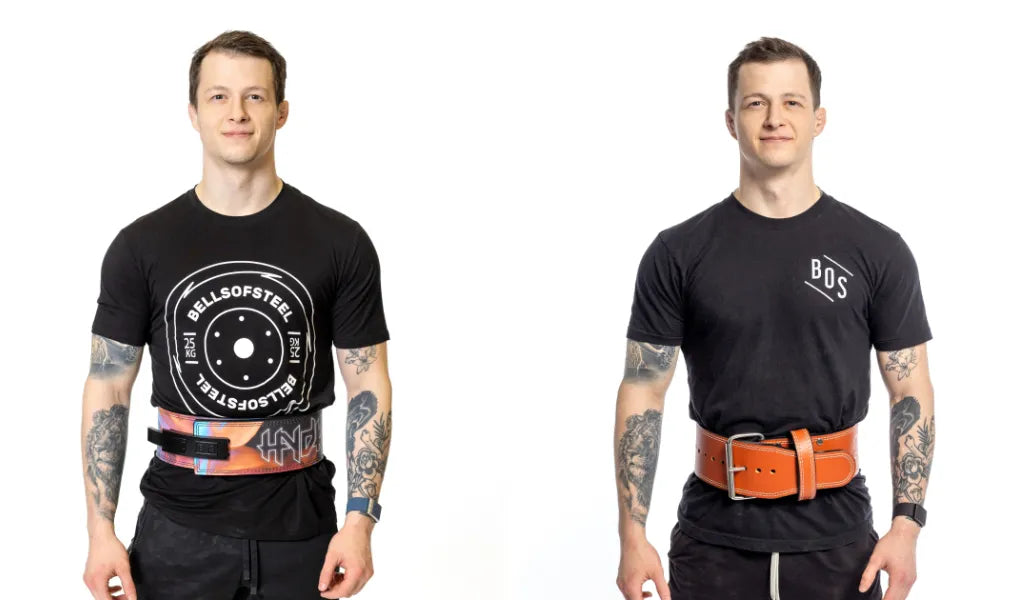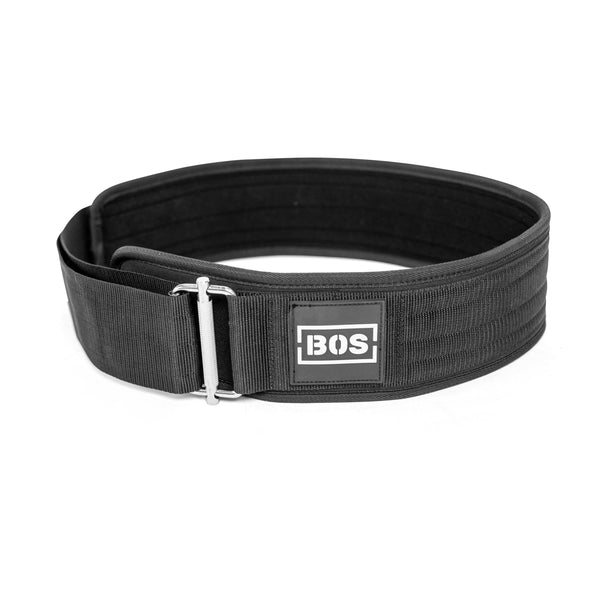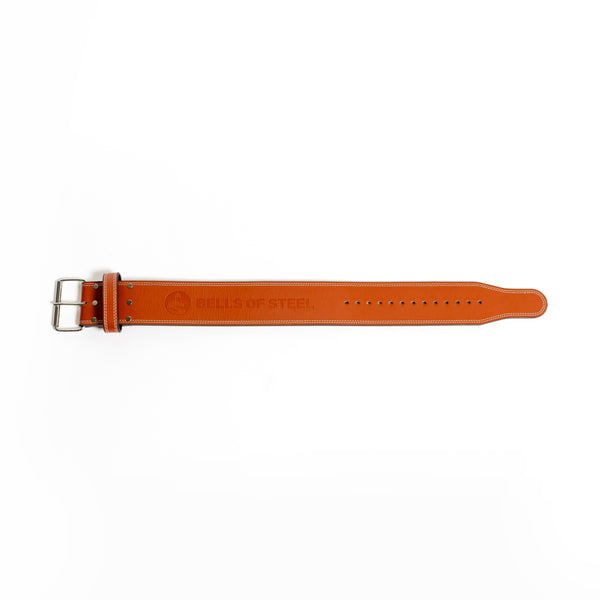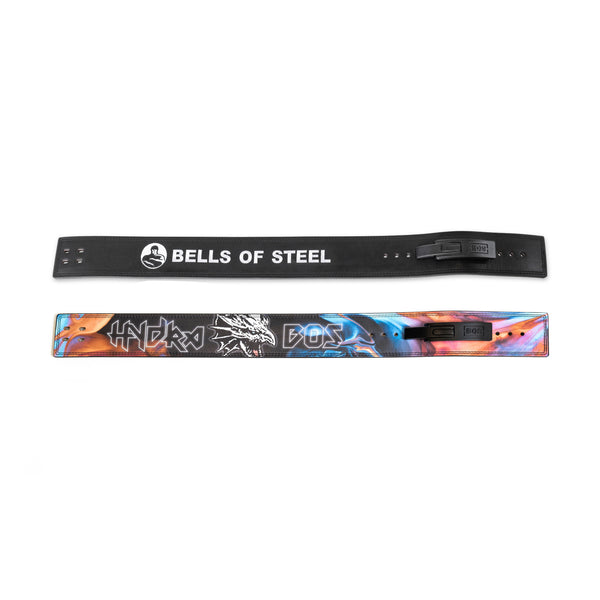If you're serious about lifting, you've probably heard of lifting belts—those sturdy, no-nonsense accessories that help you lift heavy and protect your back. But with so many options on the market, how do you know which belt is best for you?
The two most common types are prong belts and lever belts, and today, we're going to break down the pros and cons of each so you can make the best choice for your training.
What is a Lifting Belt?
A lifting belt is a piece of equipment worn around the waist to support the lower back and abdominal muscles during heavy lifts. Whether you're squatting, deadlifting, or overhead pressing, lifting belts can help stabilize your core, increase intra-abdominal pressure, and reduce the risk of injury.
The belt works by providing a solid foundation for your core, allowing you to brace harder and lift heavier without putting as much strain on your spine. They're particularly helpful for exercises that involve heavy weight and require good posture, like squats and deadlifts.
Who Should Use a Lifting Belt?
Lifting belts are ideal for anyone engaging in heavy strength training, particularly those who are lifting at or near their max. If you're lifting over 80% of your one-rep max (1RM) for exercises like squats, deadlifts, or overhead presses, it's time to consider adding a lifting belt to your routine.
Belts are particularly useful for powerlifters, Olympic lifters, and athletes in high-intensity training, but they're also beneficial for anyone looking to boost their performance while staying injury-free.
Prong Belt vs. Lever Belt: The Breakdown
When it comes to picking a lifting belt, you'll likely choose between a prong belt or a lever belt. Both serve the same core function—core stability—but they each have their own unique features. Let’s dive into the pros and cons of each.
Prong Belt: The Classic
Prong belts are the traditional style. They feature a buckle with prongs that are inserted into holes on the belt to fasten it securely. These belts are often made from leather or nylon, and their buckle system is simple yet effective.
Pros of a Prong Belt:
- Adjustable Fit: Prong belts allow for multiple hole adjustments, so you can dial in the perfect fit depending on your waist size or how tight you prefer the belt. This is great for anyone who likes to adjust their belt for different lifts or comfort levels.
- Durability: Prong belts are often made from high-quality leather or thick nylon, making them durable and long-lasting. You can rely on them to withstand years of heavy lifting.
- Cost-Effective: Prong belts tend to be less expensive than lever belts, making them a solid choice for those on a budget or just starting out in strength training.
Cons of a Prong Belt:
- Takes Time to Adjust: Adjusting the prongs to your ideal tightness can take a bit more time than the quick-release mechanism of a lever belt. This might be annoying during intense training sessions where you want to move quickly between sets.
- Less Convenient for Quick Changes: If you're someone who likes to adjust your belt between exercises, a prong belt may not be as convenient as a lever belt.
- Lever Belt: The Fast and Furious
The lever belt features a lever mechanism that clicks into place, offering an incredibly secure fit without the need for prongs and holes. The lever can be adjusted with a simple mechanism, so you get a quick, perfect fit every time.
Pros of a Lever Belt:
- Quick and Easy Adjustments: With a lever belt, you don’t have to worry about fiddling with prongs. You can easily adjust the belt and secure it with a simple lever action. Perfect for those in a rush or during heavy training when you want to conserve energy.
- Consistent Tightness: Once you've set your lever belt to your desired fit, you don't have to worry about it loosening up mid-lift. It stays secure for every set.
- Premium Feel: Lever belts often feel more like high-end gear, which can make you feel like a true lifting pro (and who doesn’t like that?)
Cons of a Lever Belt:
- Less Flexibility: Unlike prong belts, lever belts can’t be adjusted on the fly. If you need to change the fit between lifts or during the course of a training session, you'll be stuck with the one setting.
- Bulkier: Lever belts are typically thicker and bulkier than prong belts, which might feel a little too much for those new to lifting or looking for something a bit more streamlined.
- Higher Price: Lever belts can be pricier, especially if you're looking for a high-quality, well-made one. However, if you’re planning on lifting heavy for years, this may be an investment worth considering.
How to Choose the Right Belt for You
Choosing between a prong belt and a lever belt comes down to personal preference. Here are a few tips to help you make your decision:
- Training Frequency: If you lift heavy regularly and want to minimize the time it takes to adjust your belt, a lever belt might be right for you. If you like flexibility and adjusting your fit for different lifts, a prong belt might suit your needs.
- Comfort Level: Lever belts provide a snug, consistent fit, while prong belts offer more options to fine-tune the tightness. Consider what feels best for you.
- Budget: Prong belts are typically more affordable, making them a great option if you’re on a budget. Lever belts cost more but could be a good long-term investment for serious lifters.
- Fit Preferences: If you like a belt that’s easier to adjust, go for the prong belt. If you want something that clicks into place for a rock-solid fit, the lever belt is the way to go. Some people just like one better than the other, so truly whatever floats your boat.
FAQs: Prong Belt vs. Lever Belt
Q: Can I use a lifting belt for all exercises?
A: While lifting belts are great for heavy compound lifts like squats, deadlifts, and overhead presses, they’re not necessary for lighter, accessory movements. Save the belt for the big lifts.
Q: Do I need to wear a belt for every set?
A: Nope! Belts are meant for heavy sets (usually above 80% of your 1RM). You don’t need it for every set, just the ones where you're really challenging your body.
Q: Can I wear a belt all the time?
A: It's tempting, but you shouldn’t wear a belt for every lift. Your core needs to be trained to stabilize without it, or else you risk becoming reliant on the belt.
Q: Which belt is better for a home gym?
A: Both types of belts work great in a home gym, but if you want something quick to adjust between sets, a lever belt might be your friend. If you're on a budget, the prong belt is a solid option.
Conclusion: Choose Your Belt, Elevate Your Lift
At the end of the day, whether you choose a prong belt or a lever belt depends on your lifting style, preferences, and budget. Both types provide excellent core support and help you lift with confidence, so you can't really go wrong.
If you're looking for a no-fuss, adjustable option, the prong belt is your go-to. But if you want speed, consistency, and a sleek, premium feel, the lever belt could be the perfect fit.
Ready to take your lifts to the next level? Check out our range of high-quality lifting belts to find the one that works best for you—because you deserve to lift like a pro!




